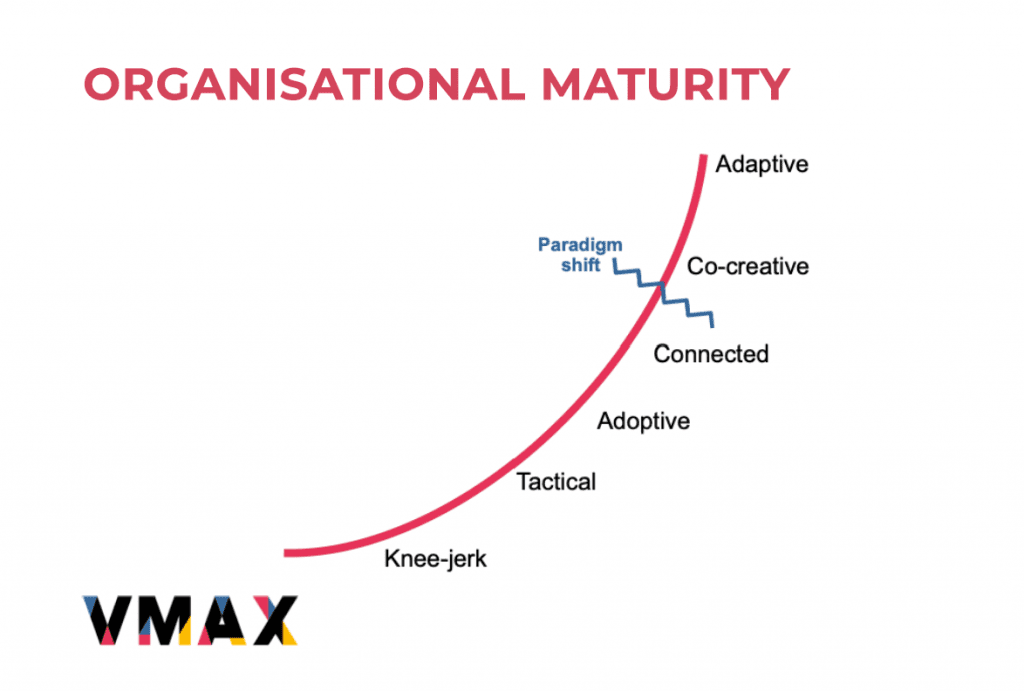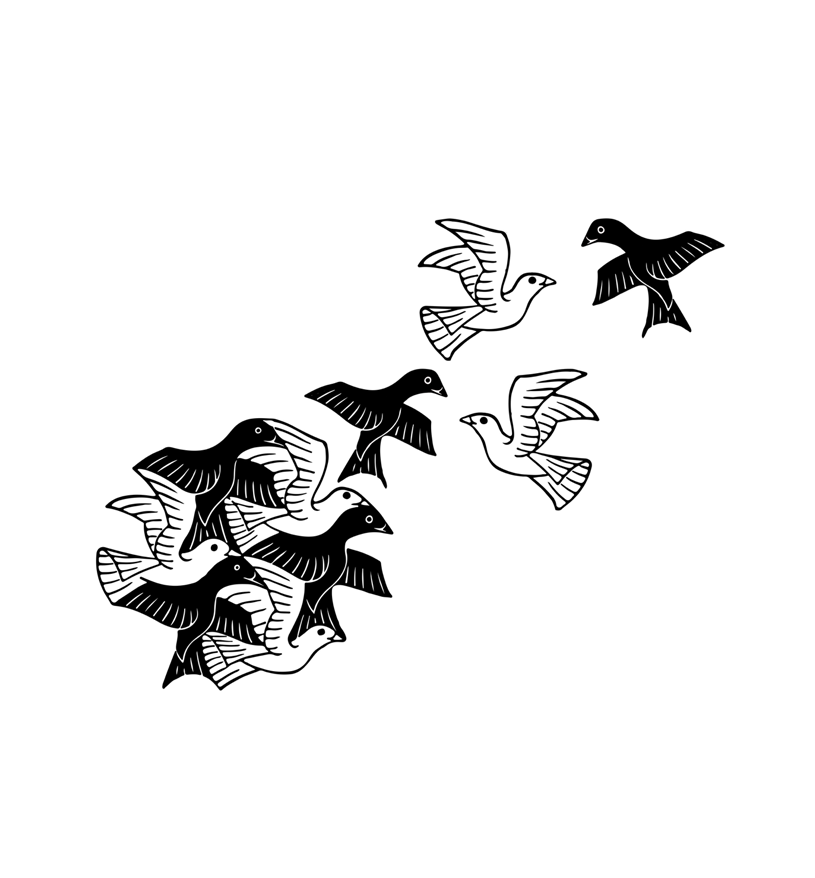In last month’s Insight we explored the nature of Organisational Maturity, and recognised that many organisations get to the Connected Phase, then stop developing, or become increasingly focused on ensuring compliance to the ‘connection processes’, which in turn stifles further maturity.
In this edition I want to explore the value of maturing into the ‘Co-creative Phase’ in more detail, to understand how the leadership team’s behaviours enable organisational capability and sustainable success, in ways which we don’t see consistently at lower levels of maturity.
In ever-evolving business environments, the concept of co-creativity has emerged as a powerful force driving innovation, collaboration, and transformative success. Co-creativity represents a departure from traditional hierarchical models of creation, emphasising the synergy that arises when individuals come together to collectively generate ideas, solve problems and innovate.
Co-creativity is a paradigm shift on the Organisational Maturity journey; reshaping industries, fostering inclusivity, and driving positive change across many sectors.

At its core, co-creativity is a collaborative and inclusive approach to problem-solving and innovation. Unlike traditional models where ideas flow from the top down, co-creativity encourages an organisation-wide approach, harnessing the collective intelligence and diverse perspectives of individuals across different functions, departments, and even external stakeholders.
This paradigm shift in innovation has six key benefits that contribute to organisational growth and success.
1. Accelerated Innovation and Problem-Solving
Co-creativity acts as a catalyst for innovation, fostering an environment where ideas flow freely and are rapidly refined through collaborative efforts. The power of diverse minds working collaboratively together accelerates the innovation process, allowing organisations to respond more quickly to market changes, technological advancements, and customer needs.
2. Employee Engagement and Satisfaction
In a co-creative environment, employees feel valued and empowered. Their contributions are acknowledged, and the sense of ownership over collective outcomes enhances job satisfaction. This heightened engagement not only boosts morale but also attracts and retains top talent, creating a positive feedback loop that benefits the organisation in the long term.
3. Breaking Down organisational silos
Traditional organisational structures often foster silos, hindering effective communication and collaboration. Co-creativity actively breaks down these silos, promoting cross-functional collaboration.
When teams with different skill sets and perspectives collaborate, the organisation becomes more agile, responsive, and capable of addressing complex challenges.
4. Greater Flexibility and Adaptability
In a rapidly changing corporate ecosystems, adaptability is a key determinant of success. Co-creativity fosters a culture of flexibility, where individuals are open to experimentation and iteration.
This adaptability is crucial for organisations navigating uncertain market conditions, technological disruptions, and other external challenges. It also prepares the organisation for the next phase of maturity – the ‘Adaptive Phase’.
5. Customer-Centric Innovation
Co-creativity extends beyond internal collaboration to include external stakeholders, most notably customers. By involving customers in the innovation process, organisations gain invaluable insights into their needs, preferences, and pain points.
This customer-centric approach ensures that the final products or services align closely with market demands, enhancing their chances of success.
6. Diverse Perspectives for Holistic Solutions
One of the primary advantages of co-creativity is the inclusion of diverse perspectives. When individuals from various backgrounds, experiences, and expertise collaborate, the resulting solutions are more comprehensive and holistic.
This diversity ensures that blind spots are minimised, risks are identified and mitigated, and innovative ideas emerge from a rich tapestry of insights.
into the Co-Creative Phase
In a world where change is constant and challenges are dynamic, co-creativity stands out as a transformative force. Co-creativity fosters a culture of continuous improvement, adaptability, and inclusivity.
As organisations navigate increasingly complex market contexts, embracing co-creativity is not just an option; it’s a strategic imperative. The ability to harness the collective intelligence of diverse teams, engage stakeholders at every level, and rapidly innovate is what sets successful organisations apart.
In the journey towards transformative success, co-creativity is the compass that guides organisations to new horizons. It is a commitment to harnessing the power of collaboration and unlocking the full potential of individuals. The question is not whether to embrace co-creativity, but how soon organisations can integrate this powerful approach into their DNA, ensuring they are not just adapting to change but driving it.
The most critical lever to manage the continuing evolution into the Co-creative Phase is the leadership behaviours and mindset.
Many of the traditional, hierarchical approaches, that proved successful in earlier phases of maturity, inhibit the required paradigm shift and prevent this exciting and exceptionally productive phase from being accessed.
Leaders need to adopt a style that relies less on their technical expertise and more on their ability to operate as enabling leaders, creating an environment within which everybody is confident that their voice is important; will be heard; will be part of the co-creative endeavour. Leadership ceases to be powerfully directional and controlling, and becomes guiding and facilitative.
That shift is so easy to talk about, but in practice so incredibly difficult to manage; particularly on a sustained basis, within the operating context of a traditional organisation. Confidence, vision, belief, persistence and resilience are some of the critical attributes that will enable this journey to be made and, in that, we see leadership as a function, increasingly, of emotional intelligence rather than technical excellence.
Leaders need to approach this with an open mind, a genuine curiosity and a high level of self-awareness, whilst being confident in the size of the prize and, particularly, the collective power and capability they will unleash across the organisation, to create transformative, sustainable innovation, collaboration, and growth.

